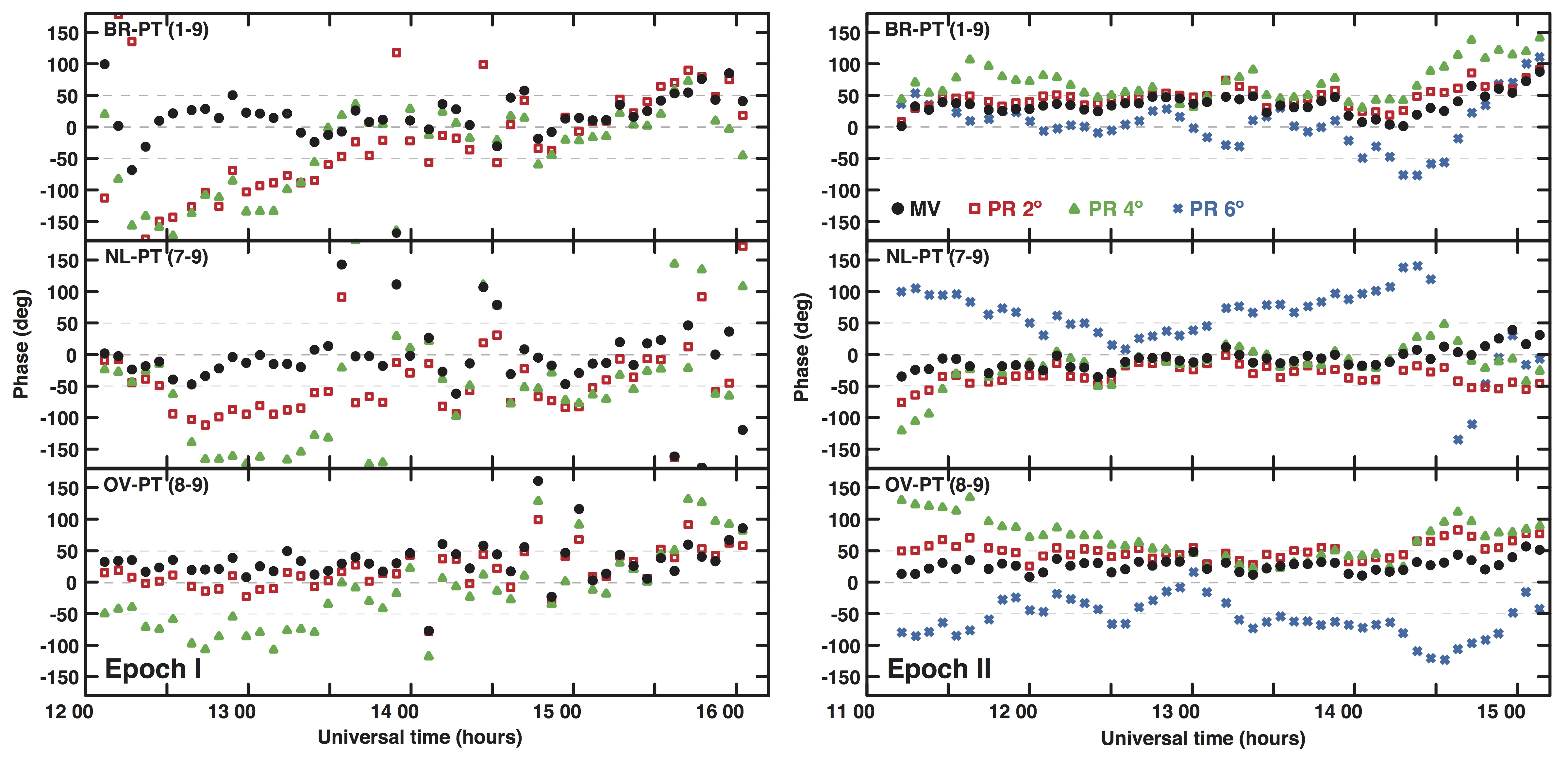Daily Image
08-06-2017Today's Colloquium: MultiView: High Precision Astrometry at Low Frequencies
| Submitter: | Gabor Orosz |
| Description: | Traditionally, VLBI astrometry is achieved by phase referencing observations using a close-by calibrator, where the errors are dominated by the target-calibrator separation. However, at low VLBI frequencies the spatial variations in the ionospheric contribution degrade the accuracy of traditional phase referencing, making sensitivity-limited astrometry an arduous task. MultiView is a multi-calibrator approach that characterizes the sky plane phase screen, allowing interpolation of the calibrator phase solutions to the line-of-sight of the target. This solves for the ionospheric error terms that drive astrometric uncertainty at low VLBI frequencies. In this colloquium I am going to The figure above shows calibrated visibility phases of an AGN source at 1.6 GHz using MultiView (MV, black) and phase referencing (PR) solutions with a calibrator at 2º (red), 4º (green) and 6º (blue), on a subgroup of representative VLBA baselines in two epochs a month apart. Slow phase drifts after conventional phase referencing indicate residual systematic errors, which are different in the two epochs and depend on the ionospheric weather conditions. The MultiView phase residuals are the smallest in all cases and show no systematic trends. They are also similar in both epochs, indicating the effective mitigation of phase errors regardless of weather conditions. |
| Copyright: | Gabor Orosz |
| Tweet |  |
